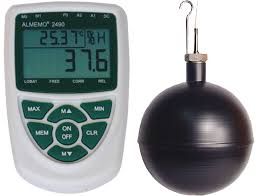Heat & Humidity Causing Wet Bulb Temperature Due To Climate Change Can Be Fatal
With heat wave in India, another phenomenon affecting human body's resilience, called The Wet Bulb Temperatures, measures heat and humidity

There’s another form of temperature that most of us have never heard of – the wet bulb temperature, measuring heat and humidity. At wet bulb temperatures (TW) of 32°C even fit, acclimatised people can’t work – at wet bulb temperatures of 35°C, even fit, acclimatised people sitting in the shade die within around six hours. Climate change is making these sorts of wet bulb temperatures increasingly likely.
With the on-going heat wave in most parts of India, there is another phenomenon at play which is affecting the human body’s resilience — The Wet Bulb Temperatures, which measures heat and humidity. At wet bulb temperatures (TW) of 32°C, even fit and acclimatised people can’t work, at 35°C, even fit and acclimatised people sitting in the shade die within six hours. Climate change is making these wet bulb temperatures more likely.
Wet-bulb and wet-bulb globe temperatures:
In hot conditions, humans cool themselves by sweating – but if the humidity is too high, sweating no longer works, and we risk dangerous overheating. The wet-bulb temperature (TW) is a measure of both heat and humidity, and therefore useful for estimating whether conditions are safe for humans. It is measured by wrapping a wet cloth around the bulb of the thermometer, and represents the lowest temperature that you can lower air to by the evaporation of water (e.g., by sweating). Under 100% humidity TW is equal to the dry-bulb temperature, while under low humidity these temperatures can be very different.
Projected rise in Wet-Bulb temperature days in various emission scenarios
(RCP or Representative Concentration Pathways are scenarios defined by the International panel for climate change emission concentrations of the full range of Green House Gases.)
Under RCP 8.5 scenario – by 2050 this will increase to 176 days in Kolkota, 215 days in the Sundarbans, 226 days in Cuttack, 233 days in Brahmapur, 314 days in Thiruvananthapurum, 229 days in Chennai, 171 days in Mumbai, and around 99 days in New Delhi.
Under RCP 8.5 scenario – by 2100 this will increase to 221 days in Kolkata, 253 days in the Sundarbans, 282 days in Cuttack, 285 days in Brahmapur, 365 days in Thiruvananthapuram, 309 days in Chennai, 261 days in Mumbai, and around 131 days in New Delhi. The West coast will be increasingly affected with around 269 days in Goa (up from 35 currently) and 362 days in Kochi (up from 98 currently) and around 349 days in Mangalore (up from 72 currently).
Under RCP 2.6 scenario – by 2100 this would be constrained to 157 days in Kolkata, 193 in the Sundarbans, 216 in Cuttack, 218 in Brahmapur, 240 in Thiruvananthapuram, 179 in Chennai, 112 in Mumbai, 81 in New Delhi, 94 in Goa, 163 in Mangalore, and 206 in Kochi.
Human health and mortality:
Heatstroke can cause symptoms from lightheadedness and nausea to organ swelling, cell signalling disruption, unconsciousness, and death.
Human skin is usually around 35°C, and as it sweats it draws heat away from the warmer core of the body. Exposure to TW of 35°C for more than around six hours is lethal even for heat-acclimated healthy humans under ideal conditions (indoors, unclothed, not moving, with a fan, and with unlimited drinking water), because at these levels of heat and humidity sweating no longer functions to cool the body. In reality, ideal conditions are rarely met, and wet-bulb temperatures as low as 28°C have led to mass mortality.
There are five physiological mechanisms triggered by heat exposure – ischemia (reduced and restricted blood flow), heat cytotoxicity (cell death), inflammatory response (swelling), disseminated intravascular coagulation (abnormal blood clotting), and rhabdomyolysis (breakdown of muscle fibres) (Mora et al. 2017b). These mechanisms affect seven vital organs (brain, heart, intestines, kidneys, liver, lungs, and pancreas). There are 27 lethal combinations of these mechanisms and organs that have been shown to be caused by heat (Mora et al. 2017b).
Labour:
At around 32°C TW, it becomes impossible even for healthy, heat-acclimated people to work. Even at TW 26°C elderly people, those with respiratory, cardiovascular, or renal issues, the elderly, and people performing strenuous activity are at risk of serious or fatal heat stroke.
If Simplified WBGT increases globally by 2°C, global labour capacity could fall from 80% to around 70%, while at 4°C that falls to under 60%. The drop in capacity will be even greater in the tropics, falling from around 70% to around 50% with 2°C warming and 40% with 4°C (Buzan and Huber 2020).
Heat and humidity levels too extreme for indoor work will occur in some parts of Africa, the Middle East, South Asia, and Australia under 1.5°C global warming. With 3°C, coastal areas of the USA, the Amazon, much of west and central Africa, coastal Middle Eastern Areas, much of South Asia, much of mainland South-East Asia, and parts of Australia could suffer these unworkable conditions (Andrews et al. 2018).
Livestock:
Under high-emissions scenarios, livestock will suffer extreme stress from high TW
year-round across much of the tropics and subtropics, and for several months a year even into higher latitudes. The rise in TW will lower dairy, egg, and meat production, increase livestock mortality, and make it impossible to keep livestock outside of air-conditioned sheds in some places.
Nature:
Other warm-blooded animals such as mammals and birds will also suffer from high wet-bulb temperatures. Small mammals cope better with heat-humidity extremes than large ones, so in prehistoric climates where the tropics were much hotter, only small mammals lived near the equator (Buzan and Huber 2020). Animals with nocturnal lifestyles and those that burrow underground are more likely to survive, while birds need more energy to cool down than mammals of the same size, so are likely more vulnerable. Mass bird mortality occurred in European Russia in the 2010 heatwave.
Adaptation issues:
If wet-bulb temperatures become high for prolonged periods, people may adapt by moving their activities and livestock indoors to air-conditioned environments, leaving them extremely vulnerable to lethal heat and humidity during power outages (which may also be more likely under heat stress), and using huge amounts of energy (Buzan and Huber 2020). People may also not be able to adapt, and be forced to move or die.
Views expressed here are those of Dr. Seema Javed, a known Environmentalist, Journalist and Communications




